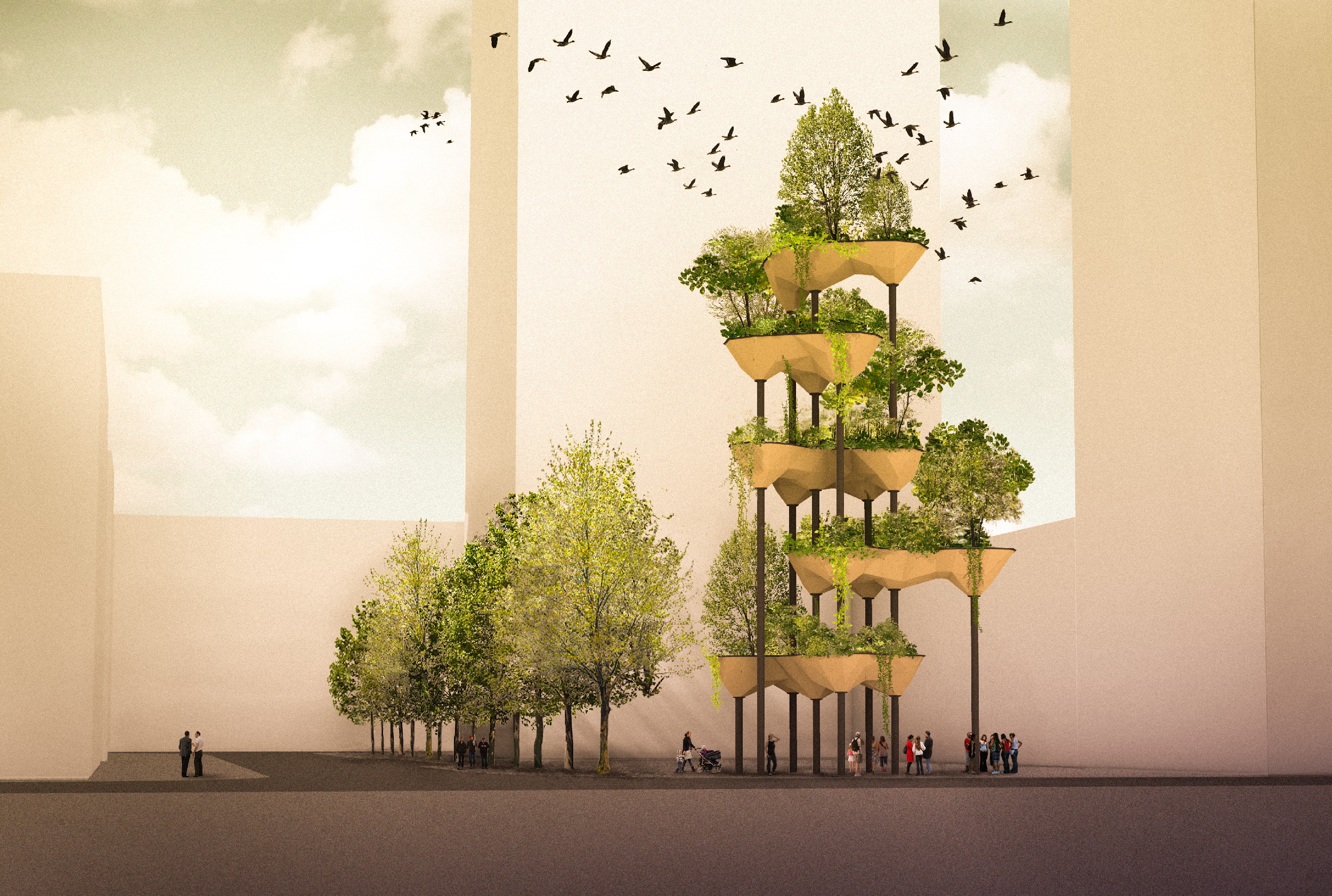Architecture and construction have always been, rather quietly, at the bleeding edge of tech and materials trends. It’s no surprise, then, especially at a renowned technical university like ETH Zurich, to find a project utilizing AI and robotics in a new approach to these arts. The automated design and construction they are experimenting with show how homes and offices might be built a decade from now.
The project is a sort of huge sculptural planter, “hanging gardens” inspired by the legendary structures in the ancient city of Babylon. (Incidentally, it was my ancestor, Robert Koldewey, who excavated/looted the famous Ishtar Gate to the place.)
Begun in 2019, Semiramis (named after the queen of Babylon back then) is a collaboration between human and AI designers. The general idea of course came from the creative minds of its creators, architecture professors Fabio Gramazio and Matthias Kohler. But the design was achieved by putting the basic requirements, such as size, the necessity of watering, and the style of construction, through a set of computer models and machine learning algorithms.
During the design process, for example, the team might tweak the position of one of the large “pods” that make up the 70-foot structure, or change the layout of the panels that make up its surface. The software they created would then immediately adjust the geometry of the overall structure and the other panels to accommodate these changes, making sure it would still safely bear its own weight and so on.
There are many automated processes in architecture, of course, but this project pushes the boundaries out in the level of final control seemingly given to them. The point, after all, is to make it a genuine collaboration, not just a sort of architectural spell-check that makes sure the whole thing won’t collapse.
“The computer model lets us reverse the conventional design process and explore the full design scope for a project. This leads to new, often surprising geometries,” Kohler said in an ETHZ news post.
Having arrived at a final design, the construction is being accomplished by another human-automation team: a set of four robotic arms operating with one mind to hold multiple heavy pieces (each pod has dozens) in place while humans apply the resin used to keep them together. It’s a step above the technique we saw used a few years ago by the same team when they used robots as automated assistants.
Semiramis is being constructed in the workshop then shipped piece by piece to its eventual home at Tech Cluster Zug. It should be fully assembled and ready to accept soil and seeds this coming spring, so stop by if you’re in the area.
source https://techcrunch.com/2021/11/24/robots-and-ai-assist-in-designing-and-building-swiss-universitys-hanging-gardens/


0 comments:
Post a Comment